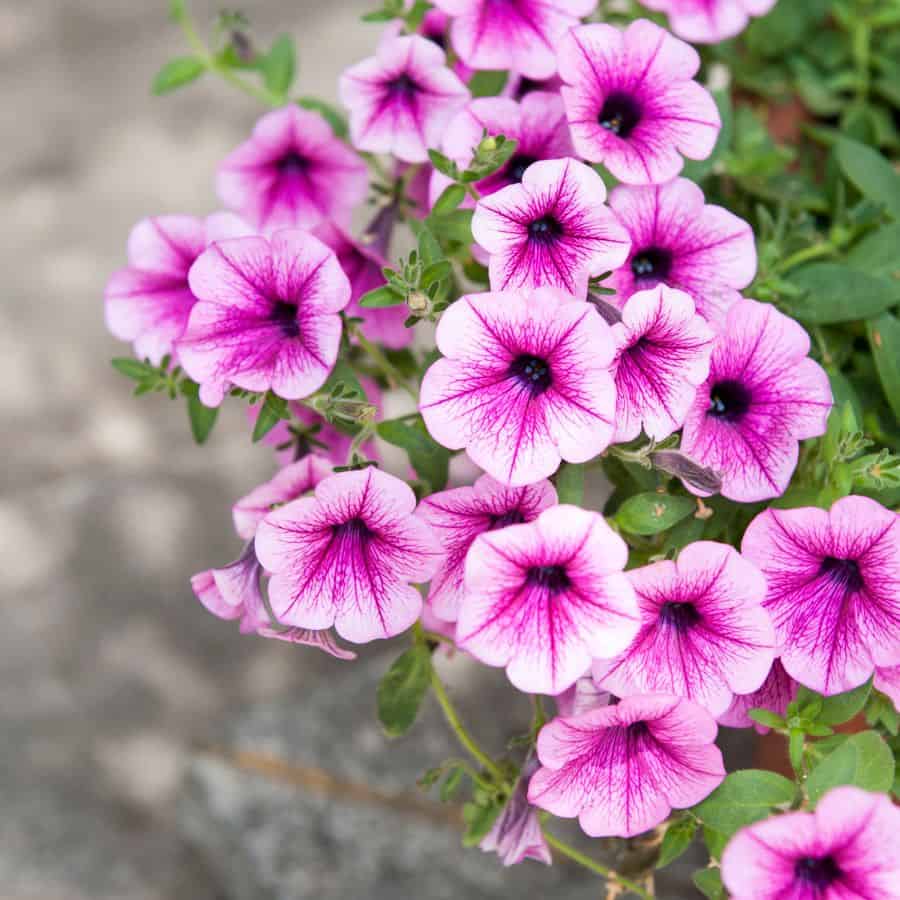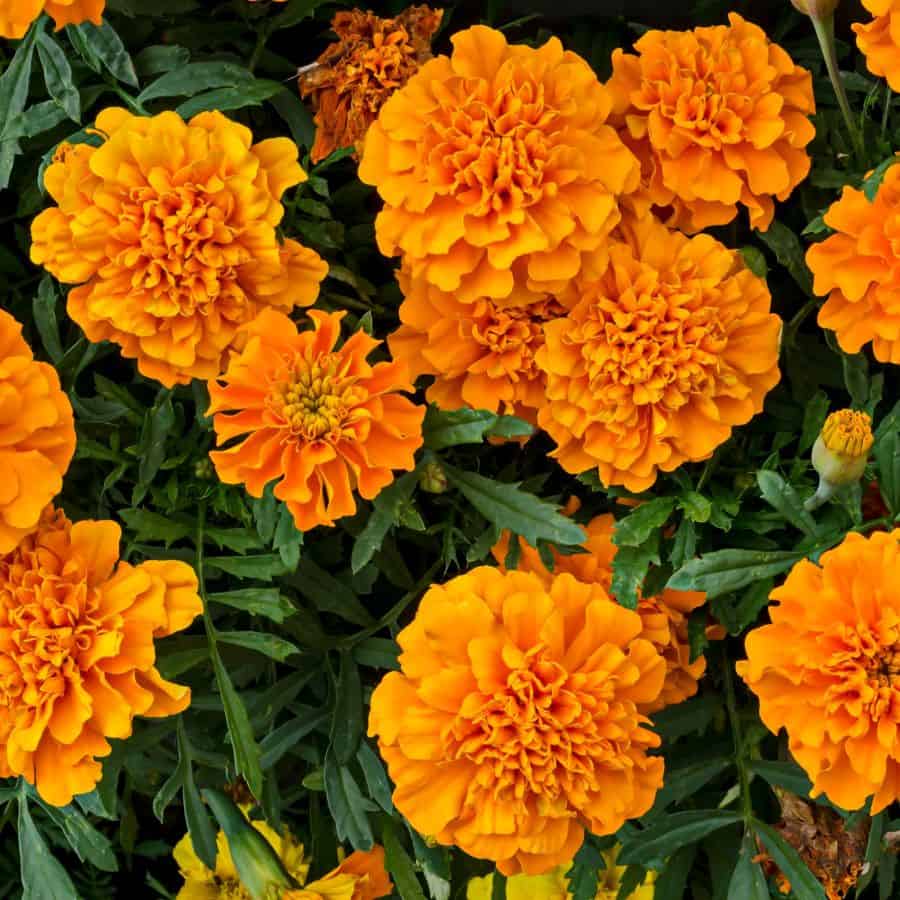
I was shocked to discover the secret to spectacular blooms sitting in my kitchen cabinet. After years of struggling with disappointing flowers and mediocre garden results, one simple ingredient transformed everything.
That game-changer? Ordinary baking soda.
Most gardeners spend hundreds on fancy fertilizers and growth boosters, but the pros know something different. The difference between amateur and pro plant parents is simply understanding how one $1 box of sodium bicarbonate can revolutionize your entire garden.
1. Begonias (Begonia species)
These colorful powerhouses thrive with baking soda treatment. The alkaline boost helps them absorb nutrients like tiny green sponges, resulting in blooms that are 40% larger than untreated plants.

Your begonias try to tell you something important when their colors look dull. They’re screaming for pH balance. Give them the baking soda solution, and watch those petals transform into vibrant jewels that’ll make your neighbors stop and stare.
2. Hydrangeas (Hydrangea macrophylla)
Here’s where things get dramatic. Hydrangeas are like mood rings for your garden. Their color completely depends on soil conditions. The secret most plant experts won’t tell you is that baking soda doesn’t just change the color; it intensifies it.
One treatment can shift your hydrangeas from wimpy pastels to bold, restaurant-worthy pinks that look like they belong in a luxury resort.
3. Zinnias (Zinnia elegans)
These cheerful bloomers suffer in acidic soil, but most people don’t realize it. Zinnias treated with baking soda produce 60% more flowers per plant. That’s like getting three plants for the price of one!
The antifungal properties also mean your zinnias will bloom from spring until the first hard frost, giving you months of continuous color.
4. Roses (Rosa species)
Forget what you’ve heard about roses being high-maintenance divas. The breakthrough that changes everything is understanding that most rose problems stem from fungal issues, not complicated care requirements.
Baking soda acts like a protective shield, preventing black spots and powdery mildew before they can damage those precious petals. The result? Stunning roses with fragrance so intense it’ll perfume your entire yard.
5. Petunias (Petunia × atkinsiana)
Most people make this mistake with their petunias. They assume the plants are naturally short-lived bloomers. Wrong! Healthy petunias should cascade with flowers for months, and baking soda is the key to unlocking that potential.

By preventing the fungal diseases that cut blooming seasons short, you’ll have spectacular displays that last three times longer than untreated plants.
6. Chrysanthemums (Chrysanthemum morifolium)
These fall favorites are blooming machines when given proper care. The game-changer for your mums isn’t expensive fertilizer. It’s pH balance and disease prevention.
Baking soda-treated chrysanthemums produce blooms lasting 4-6 weeks longer than untreated plants, giving you gorgeous color in late autumn.
7. Geraniums (Pelargonium species)
Your geraniums have been struggling to reach their full potential, and it’s not your fault. These Mediterranean beauties crave alkaline conditions that most garden soils can’t provide naturally.
The transformation is like watching a stressed office worker finally go on vacation – suddenly, everything about them improves. Stronger stems, bigger blooms, more vibrant colors.
8. Lilies (Lilium species)
Here’s a revelation that changed my entire approach to lily care: these elegant beauties are incredibly resilient when protected from their one weakness: fungal diseases.
Baking soda creates an invisible force field around your lilies, allowing them to focus all their energy on producing those show-stopping blooms instead of fighting off infections.
9. Marigolds (Tagetes species)
I was shocked to discover that marigolds could be even better pest deterrents than they already are. Healthy, thriving marigolds produce stronger scent compounds that make garden pests think twice about setting up camp.

It’s like upgrading from a basic security system to a high-tech fortress; same concept, dramatically better results.
10. Daisies (Bellis perennis)
These cheerful classics are desperate for slightly alkaline conditions, but most gardeners plant them in whatever soil they have. The miracle happens when you give daisies what they want.
Properly treated daisies produce clusters so full and abundant that they look like a florist has professionally arranged them.
11. Impatiens (Impatiens walleriana)
Don’t let anyone tell you impatiens are difficult. They’re just particular about their environment. These shade-loving beauties will reward proper pH balance with continuous blooms that cover the entire plant.
The transformation from sparse, struggling plants to lush, flower-covered specimens happens in just 2-3 weeks with consistent baking soda treatment.
12. Pansies (Viola × wittrockiana)
Your pansies try to tell you something important when their faces look small and pale. These cool-weather champions can produce blooms twice their normal size when given optimal growing conditions.
The secret trick that changes everything is understanding that bigger blooms aren’t about more fertilizer. They’re about creating the perfect pH environment for maximum nutrient uptake.
The Magic Recipe That Changes Everything
Here’s the game-changing formula that transformed my garden from mediocre to magazine-worthy:
- 1 tablespoon of baking soda per gallon of water
- Apply every 2 weeks during the growing season
- Water the soil directly, not the leaves (except for fungal prevention)
- Apply in the early morning or evening to prevent leaf burn

The science is simple but powerful: baking soda neutralizes acidic soil, creating an environment where harmful fungi can’t survive. It’s like giving your plants both a nutritionist and a bodyguard in a straightforward treatment.
Warning: Don’t Make These Common Mistakes
Most people fail with baking soda because they think more is better. Wrong! Too much can swing your soil too alkaline, which is just as bad as being too acidic.
Always test your soil pH before starting – you want to aim for 6.5-7.0 for most flowering plants. If your soil is already alkaline, this method isn’t for you.
The difference between spectacular success and garden disaster is simply following the recipe exactly as written. No shortcuts, no “improvements” – just consistent, measured application.